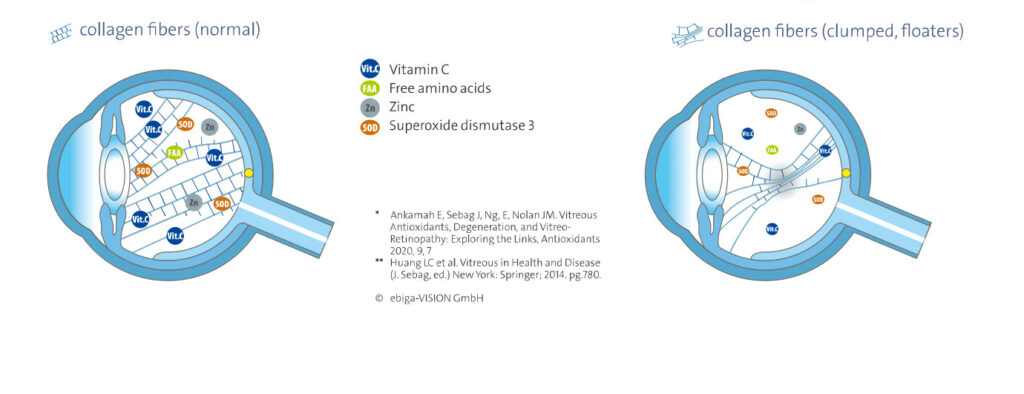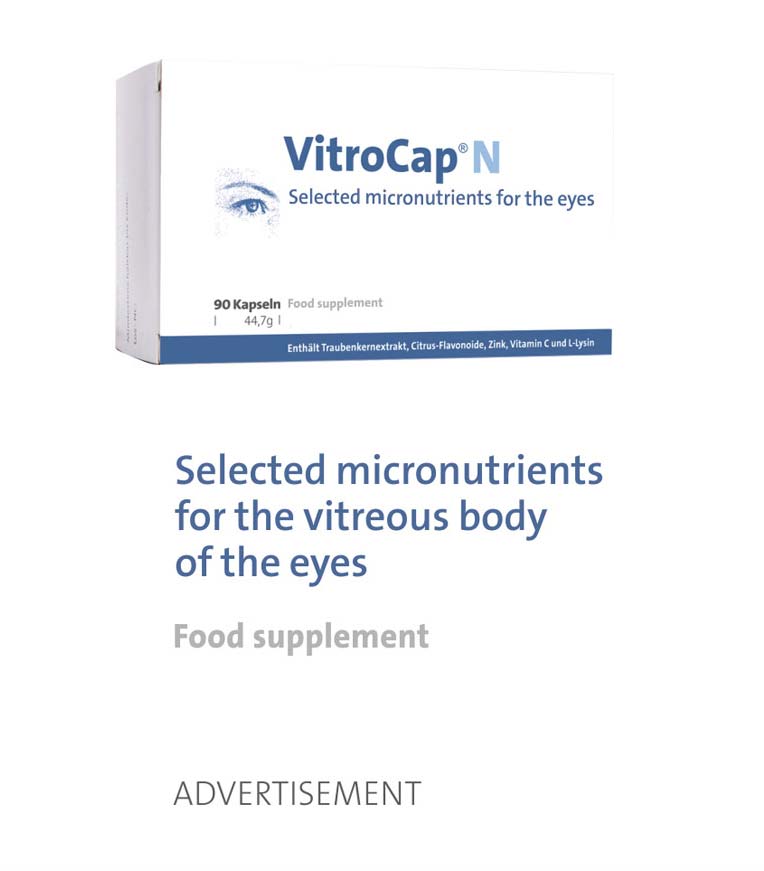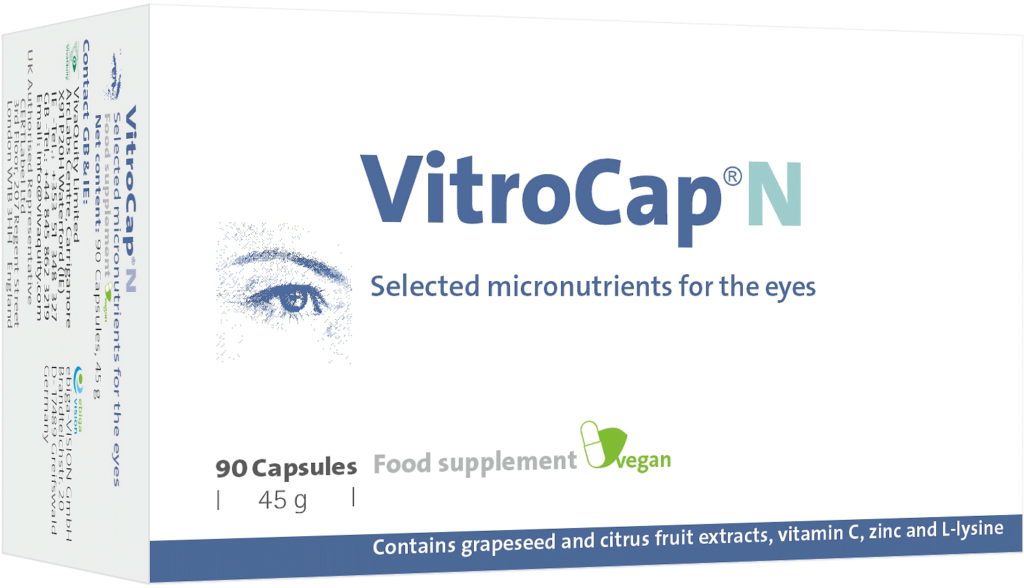Floaters arise from the clustering of collagen fibers within the vitreous, casting shadows on the retina and appearing as perceived fluff or filaments. Floaters are entopic images seemingly outside the eye, yet they originate in the vitreous. The root cause of this symptoms is vitreous degeneration.
Composed primarily of water and macromolecules like collagen fibrils and hyaluronic acid, the vitreous forms a transparent, homogeneous gel adhering to the retina. This gel’s integrity is crucial for clear vision. Over the course of life, degenerative changes occur in the vitreous. Initially, finely distributed protein components and fibers clump together, causing disintegration and shrinkage.

There are four primary factors contributing to the development of eye floaters: myopia, micronutrient deficiency, oxidative stress, and external triggers such as injuries and eye diseases. However, these causes do not operate in isolation. Rather, they often interact and combine, with one factor potentially exacerbating the effects of another. This complex interplay underscores the multifaceted nature of vitreous degeneration and the formation of floaters:
1. Diseases and Injuries
While scientists aren’t completely united on the causes of a vitreous degeneration, injuries, eye diseases, medication side effects, stress, high blood pressure and myopia (nearsightedness) are potential factors. Beyond these external and physiological factors, recent scientific research has begun to delve deeper into the role of micronutrients in maintaining a healthy vitreous. Understanding how the deficiency of essential micronutrients contributes to vitreous degeneration provides new insights into the prevention and treatment of eye floaters
2. Myopia (Nearsightedness)
In myopia, or nearsightedness, the eyeball is elongated, stretching the vitreous. This elongation alters the structure and consistency of the vitreous gel, making it more suspectible to early degeneration. The increased stress and strain on the vitreous humor due to the elongated shape of the myopic eye causes the collagen fibers within the vitreous to clump more rapidly. This accelerated breakdown leads to the formation of floaters as the vitreous becomes less uniform and more prone to clumping of these fibers. Additionally, the physical changes in the eye associated with myopia can disrupt the normal metabolic processes within the vitreous, further accelerating its aging and contributing to the earlier appearance of floaters. Furthermore, the altered optics of a myopic eye lead to more pronounced shadows on the retina, making floaters more noticeable and disturbing to individuals with myopia.
3. Lack of Micronutrients
Certain micronutrients are known to accumulate in the human vitreous and have been shown to decrease with degeneration and disease:
- Vitamin C (ascorbic acid) plays a crucial role in supporting various physiological functions in the body, including collagen synthesis, immune function, and antioxidant defense. When it comes to reducing floaters in the eye naturally, Vitamin C helps counter intraocular oxidative stress by consuming reactive oxygen species and free radicals released at the vitreoretinal interface, a process dependent on ascorbate, the active form of Vitamin C.
- Zinc plays a vital role in ocular health through its potent antioxidative, antiglycative, and tissue-protective properties. As a cofactor for antioxidant enzymes, zinc effectively scavenges harmful free radicals, reducing oxidative stress within the eye. This action helps preserve visual function and mitigate age-related eye conditions. Additionally, zinc exhibits significant antiglycative properties by inhibiting the formation of advanced glycation end-products (AGEs), which cause tissue damage and inflammation. By preventing glycation, zinc maintains the structural integrity of ocular tissues. Furthermore, zinc stimulates the synthesis of metallothionein, a protein that protects tissues from glycation, supporting ocular health and addressing eye floaters formation
- L-Lysine helps prevent collagen glycation and serves as a chemical chaperone. A chemical chaperone is a molecule that helps stabilize the structure of proteins, ensuring they fold correctly and maintain their proper function.
A deficiency in these micronutrients can reduce the antioxidative and antiglycation capabilities of the vitreous humor, leading to the clumping of collagen fibers and the formation of floaters.

4. Oxidative Stress
Oxidative changes in collagen fibers, hyaluronic acid, and other vitreous components play a crucial role in the development of vitreous opacity. High-energy light sources and oxygen pressure from the retina generate reactive oxygen species, known as free radicals, which trigger this process.
When the activity of free radicals surpasses the vitreous’ antioxidant defense capacity, it leads to oxidative stress and subsequent damage. This stress is intensified by blue light, especially sunlight. Since the eye is exposed to direct sunlight, it is particularly susceptible to oxidative stress.
To learn more about countering oxidative stress through a healthy diet and supplementation, click here.


